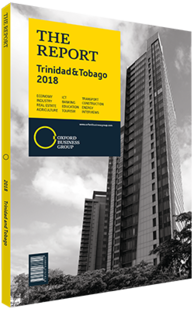Higher market penetration key to growth in Trinidad and Tobago's capital markets
Vibrant capital markets generally rely on two critical ingredients: a comprehensive regulatory framework and a wide investor base. The Trinidad and Tobago Securities Exchange Commission, in conjunction with market participants, has made considerable strides in addressing the first of these elements over the past two decades, though certain shortfalls remain. The second ingredient, however, continues to elude.
Current Players
Market participation in T&T, as measured by active brokerage accounts, is less than 1% of the adult population. This compares poorly to other frontier and emerging economies where, through concerted efforts, individual market participation has increased substantially over the past decade. Instead, most citizens gain exposure to the markets primarily through the National Insurance Scheme, occupational pension plans and mutual funds, while a small percentage hold credit union accounts.
Institutional investors, as in most regions, dominate the market. However, the over-representation of pension plans and insurance firms creates a dynamic of low liquidity. Long-term buy-and-hold investors, averse to short-term profit-taking, create a cycle where low trading volumes encourage even lower trading activity, as investors tend to hold securities despite deteriorating fundamentals. While this low-volume environment does ultimately result in reduced volatility, especially in the stock market, it also means that rational pricing is generally a secondary concern for the largest segment of the market. Institutional investors, especially, are disincentivised to purchase securities at expensive valuations to reduce the cash drag on their portfolios. Pricing equilibrium, consequently, does not function the way it ought to. When a large block of shares in a first-tier company becomes available, buyers tend to snatch up the offering irrespective of the underlying fundamentals of the firm or industry.
High-Potential Groups
Encouraging a wider pool of investors to participate in the capital markets is therefore key for further development. Younger individuals entering their formative years of saving and investing should be particularly encouraged to enter the markets. These investors, who are typically more open to risk, would not only facilitate more trading, but would also engender greater sophistication in the market on a systemic level, based on accumulated experience as they grow older. Young families are also a crucial segment that remains under-represented in the marketplace. The ability to access consumer credit through a securities portfolio, while ubiquitous in most parts of the world, needs further development in T&T. Young professionals, who may own few other assets, could use their shares and bonds as loan collateral.
More experienced investors, looking to draw on their pension income in older age, also need products that can help them plan effectively for their golden years. Financial advisors can help these individuals undertake the critical aspects of estate planning and ensure that their overseas assets are protected from exorbitant taxes. These investors, who can sometimes accumulate substantial sums throughout their lives and are prime bond investors, are currently an untapped resource for the central government and corporations alike that are looking to fund their growth at a reasonable cost. This class of investors can also help boost the moribund secondary bond trading market, which presently relies heavily on institutional investors.
Furthermore, employee-directed pension savings plans, which carry tax advantages, are sorely needed in the market. Currently, occupational pension plans and annuities are the most popular mechanisms through which individuals can save for their retirement in tax-efficient structures. Self-managed retirement portfolios are instruments that could garner more interest in the market among middle-aged citizens. Ultimately, a few tweaks in product offerings and accompanying regulations can lay the groundwork for the participation of a much broader class of investors in the capital markets.
You have reached the limit of premium articles you can view for free.
Choose from the options below to purchase print or digital editions of our Reports. You can also purchase a website subscription giving you unlimited access to all of our Reports online for 12 months.
If you have already purchased this Report or have a website subscription, please login to continue.

